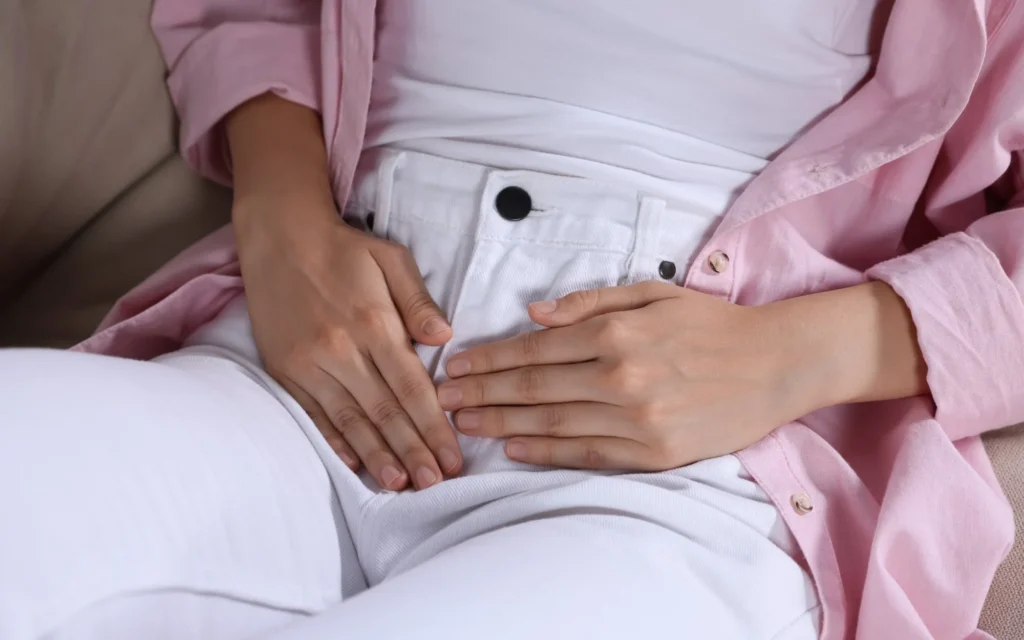When people hear the word vaginismus, it’s often assumed to be tied directly to a traumatic experience—such as sexual abuse or assault. While trauma can certainly be a contributing factor, it’s not the only possible cause. In fact, many individuals experience vaginismus without any clear history of trauma, which can lead to confusion, frustration, and feelings of isolation.
Recommended: Is Burning During Penetration a Sign of Vaginismus?
This article explores how vaginismus can develop in the absence of trauma, shedding light on the lesser-known psychological, physical, and emotional triggers. Understanding these alternative pathways is essential not only for those experiencing symptoms, but also for partners, healthcare providers, and anyone seeking a more compassionate, informed view of sexual health.
What Is Vaginismus?
Vaginismus is a condition in which the muscles around the vaginal opening tighten involuntarily, making penetration—whether during sex, a gynecological exam, or tampon use—painful or even impossible. This tightening isn’t something a person can control, and it often happens despite a desire to engage in the activity.

The condition is both physical and psychological. While the pain or muscle contraction is felt in the body, it’s often influenced by mental or emotional factors such as fear, anxiety, or past experiences. In some cases, there may be no obvious cause at all.
Recommended: Can Vaginismus Develop Suddenly?
Vaginismus is usually categorized as:
- Primary vaginismus, where the person has never been able to have penetrative sex due to pain or muscle response.
- Secondary vaginismus, where the condition develops after a period of previously comfortable penetration.
It’s important to understand that vaginismus is not about lack of desire or unwillingness—it’s a medical condition, and it’s treatable.
Is Trauma Always the Cause of Vaginismus?
Trauma is commonly associated with vaginismus, but it’s important to understand that it’s not always the cause. While experiences such as sexual abuse, assault, or invasive medical procedures can contribute to the condition, many individuals develop vaginismus without any history of trauma.
In fact, vaginismus can arise from a wide range of factors. Some people experience it due to underlying anxiety or fear about sex, while others may be influenced by limited or negative sexual education. Cultural or religious beliefs that frame sex as shameful or dangerous can also play a role. In certain cases, people develop vaginismus simply because of fear of pain, stress, body image concerns, or tension within a relationship. Medical issues or past experiences with pelvic pain may also contribute, even if they weren’t traumatic in nature.
Sometimes, vaginismus develops without any clear reason at all—just the body’s way of reacting protectively. Whatever the cause, it’s important to recognize that vaginismus is real, valid, and treatable, regardless of whether trauma is part of the story.
Recommended: Holistic Tips for Boosting Female Libido Without Medication
How Fear and Anxiety Can Trigger Vaginismus
Fear and anxiety are powerful forces that can affect the body in very real, physical ways—and vaginismus is a clear example of this mind-body connection. When someone feels anxious or fearful about sex or penetration, even subconsciously, their pelvic floor muscles can respond by tightening involuntarily. This muscle tension acts as a protective reflex, as if the body is trying to prevent harm, even when there’s no actual danger present.
This fear might stem from a variety of sources: a lack of sexual education, past negative or painful experiences, religious or cultural conditioning, or simply the pressure to “perform” during intimacy. Over time, these feelings can build up and create a cycle—anticipating pain leads to anxiety, which causes muscle tightening, which then leads to pain during penetration. The painful experience then reinforces the fear, and the cycle continues.
Even people in loving, safe relationships can develop vaginismus if fear or anxiety becomes tied to the act of penetration. This doesn’t mean there’s something “wrong” with them—it’s simply how the nervous system can react when it’s under stress.
Understanding this connection is a critical step toward healing. When fear and anxiety are addressed—through therapy, education, or gentle physical treatment—many people find their symptoms begin to improve.
Physical Factors That Can Lead to Vaginismus
While vaginismus is often discussed in psychological terms, there are also several physical factors that can contribute to or even directly cause the condition—without any involvement of emotional trauma.
1. Urinary Tract Infections (UTIs) or Yeast Infections

Both UTIs and yeast infections can cause irritation, itching, burning, and pain, particularly during intercourse. These infections make the vaginal area sensitive and inflamed, leading to the tightening of pelvic muscles as a natural defense mechanism. Once this painful association is formed, the body may react with muscle contractions during future attempts at penetration, even when the infection has resolved.
Recommended: Can Mold Cause Staph Infection?
2. Vaginal Dryness
Vaginal dryness can occur for several reasons, including hormonal fluctuations (such as during menopause), the use of certain medications (like antihistamines or antidepressants), or insufficient arousal. When the vaginal tissue lacks natural lubrication, penetration can cause discomfort or pain. The body may involuntarily tighten the pelvic floor muscles in response to this discomfort, leading to vaginismus over time.
3. Hormonal Changes
Significant hormonal shifts—such as those experienced during menopause, postpartum recovery, or as a result of specific medications or treatments (like chemotherapy)—can lead to changes in vaginal health. These hormonal changes may cause the vaginal walls to become thinner, drier, and less elastic, increasing the likelihood of pain during penetration. This discomfort can trigger the body’s protective response of muscle tightening.
4. Overactive Pelvic Floor Muscles
Some individuals naturally experience tension in their pelvic floor muscles, often due to chronic stress or anxiety. This can cause the muscles around the vaginal opening to become tight, which can make penetration difficult or painful. Even without any direct physical trauma, this tightness may contribute to vaginismus, as the body instinctively contracts in response to any pressure on these already tense muscles.
Recommended: Can You Do Kegels On Your Period?
5. Scarring or Sensitivity from Past Surgeries or Injuries
Surgeries such as a hysterectomy, episiotomy, or pelvic surgeries can leave scarring or cause changes to the pelvic region that make penetration painful. Additionally, injuries like pelvic fractures, traumatic childbirth experiences, or any pelvic trauma can result in sensitivity or scar tissue, which may lead to muscle tightening as a protective mechanism. Even though these physical changes may not be traumatic in an emotional sense, they can still cause discomfort and contribute to the development of vaginismus.
6. Chronic Pain Conditions
Certain chronic conditions like vulvodynia (a condition characterized by chronic pain in the vulva), endometriosis (which causes tissue similar to the uterine lining to grow outside the uterus), and interstitial cystitis (bladder pain syndrome) can create persistent pelvic pain. These conditions often make the area sensitive, and the pain can trigger the body to tighten in response to the discomfort. The resulting muscle spasms or tension can lead to vaginismus, especially if the individual associates penetration with pain or discomfort.
Treatment Approaches for Vaginismus Without a Trauma Background
When vaginismus develops without a history of trauma, the treatment approach focuses on addressing the physical and psychological factors that contribute to the condition. Treatment is individualized and often involves a combination of methods aimed at relaxing the pelvic muscles, reducing anxiety, and improving sexual confidence. Here are some common and effective treatment options:
1. Pelvic Floor Physical Therapy
Pelvic floor physical therapy is one of the most effective treatments for vaginismus, especially when the condition is caused by muscle tension or pelvic floor dysfunction. A trained pelvic floor therapist will guide the individual through exercises designed to relax and strengthen the pelvic muscles. These exercises may include gentle stretching, relaxation techniques, and biofeedback, which helps individuals become more aware of their muscle responses. Over time, this can reduce muscle spasms and improve the ability to tolerate penetration.
Recommended: Can Kegels Cause Bleeding?
2. Gradual Desensitization (Dilation Therapy)
For many people with vaginismus, vaginal dilators are a key part of treatment. This method involves gradually introducing different sizes of dilators into the vaginal opening to help desensitize the area and reduce muscle spasms. The process is usually done under the guidance of a healthcare professional or pelvic floor therapist, who can teach the individual how to use the dilators properly and progressively. The goal is to gradually increase comfort with penetration, starting with smaller dilators and working up to larger sizes over time.
3. Cognitive Behavioral Therapy (CBT)

Cognitive Behavioral Therapy (CBT) is particularly useful if anxiety or fear is a significant factor in the development of vaginismus. CBT helps individuals identify and challenge negative thoughts and beliefs about sex and their bodies. By addressing unhelpful thought patterns and replacing them with healthier perspectives, CBT can help reduce anxiety, improve sexual confidence, and ease muscle tension associated with vaginismus. A trained therapist can work with individuals to explore their emotions, thoughts, and any underlying fears.
4. Sex Therapy
Sex therapy can be an important tool in overcoming vaginismus. A sex therapist works with individuals or couples to address the psychological aspects of sexual function, including feelings of fear, shame, or pressure. Through open communication, education, and various techniques, sex therapists can help people feel more comfortable with intimacy, build trust with their partners, and overcome any anxieties surrounding sexual activity.
5. Relaxation Techniques and Mindfulness
Since vaginismus is often exacerbated by anxiety or stress, incorporating relaxation techniques can be highly beneficial. Practices such as deep breathing, meditation, progressive muscle relaxation, and mindfulness exercises can help reduce overall tension in the body. By calming the nervous system and learning how to relax the pelvic floor muscles, individuals can become more attuned to their bodies and reduce involuntary muscle contractions.
Recommended: Does Slippery Elm Help With Vaginal Dryness?
6. Education and Communication
For many individuals, lack of sexual education or fear due to misinformation can contribute to vaginismus. Education on the anatomy of the body, how sexual activity works, and what is “normal” can help alleviate feelings of uncertainty or fear. Open and honest communication with a partner about boundaries, desires, and comfort levels is also essential in reducing anxiety and promoting healing. Feeling supported and understood by a partner can make a significant difference in the treatment process.
7. Medications
In some cases, medications such as topical numbing agents, vaginal moisturizers, or even muscle relaxants prescribed by a healthcare provider may be recommended to help reduce discomfort and muscle spasms. While these medications can provide temporary relief, they are often used in conjunction with other therapies like pelvic floor physical therapy or cognitive-behavioral techniques for more long-term success.
Recommended: Can You Conceive Naturally After IVF Treatment?
8. Lifestyle Changes
Maintaining a healthy lifestyle that includes regular exercise, a balanced diet, and stress management can also be helpful in addressing vaginismus. Chronic stress and anxiety can exacerbate muscle tension, so managing stress through physical activity, adequate sleep, and relaxation can reduce the frequency and intensity of vaginismus symptoms.
Conclusion
Vaginismus is a complex condition that can arise from various factors, not just trauma. Whether caused by anxiety, physical issues, or cultural beliefs, it is treatable. Treatment options like pelvic floor therapy, desensitization, and cognitive behavioral therapy offer a path to healing and recovery.
It’s important to remember that vaginismus does not define your worth or sexual potential. With the right support and treatment, you can regain control over your body and intimacy. Seeking help is a powerful first step, and recovery is possible with time and the right approach.
